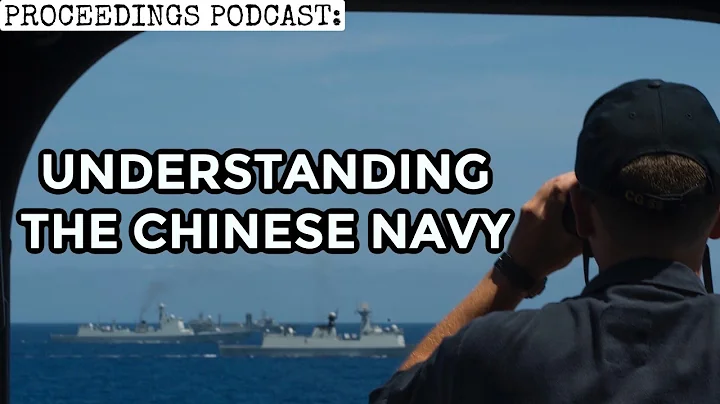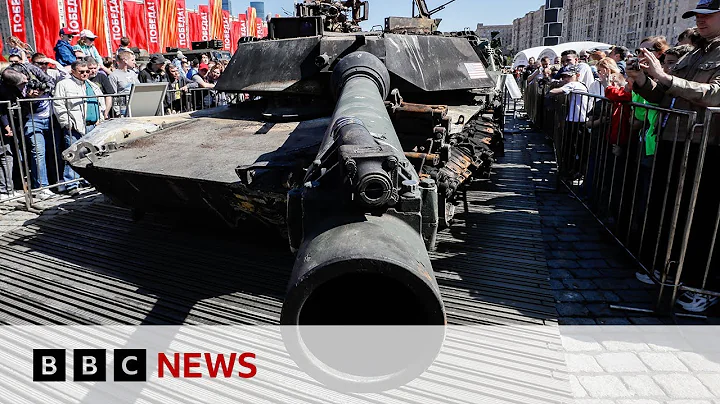Foreword: Recently, U.S. Navy officer Duno published an article at the U.S. Naval Institute, claiming that today’s U.S. Navy has little advantage over the Chinese military and is even at a disadvantage. If there is a conflict between China and the United States, the U.S. Navy can China has deployed mines in offshore waters to cut off China's maritime trade in order to destroy China's economy and force China to negotiate. Some people think that this article, which won the first prize in the U.S. Naval Institute's essay contest, is full of absurd fantasies. However, as a professional military writer, you should still analyze it. The feasibility of this article.
 : History of Mine Warfare in the United States
: History of Mine Warfare in the United States

Mine warfare refers to the implementation of mines and blockades of enemy ports and waterways or even cutting off enemy waters and shipping. Although cheap mines have no immediate lethality, they are powerful in damaging and can create fear for a long time and paralyze the enemy. It forces the enemy to spend a lot of time conducting mine clearance operations. Before the minefield is cleared, it will be a problem for ships to even enter and exit the port. It also restricts the activities of enemy naval vessels, which is equivalent to disabling their combat capabilities. Historically, The cost-effectiveness ratio of mine warfare is higher than that of decisive battles at sea. The United States is a country with a rich history of mine warfare. It has used mines to attack the British fleet since the founding of the country in 1778. Since then, it has been shown in many wars that mines are the simplest method of naval warfare. Another formidable threat. During World War I, the United Kingdom and the United States deployed 73,000 mines in the North Sea, forming a "North Sea Mine Barrier" that trapped German submarines in their home ports. During World War II, German submarines were also among them. Dow responded by laying 327 mines in several ports in the northern United States, sinking and damaging 11 American ships.

The most effective mine warfare in World War II was the " Hunger Campaign" in the war against Japan. In order to weaken Japan's war potential, the US military launched the largest minelaying offensive in history. From March to August 1945, 1,529 troops were dispatched B-29 heavy bombers and submarines deployed 12,135 magnetic, acoustic, and hydraulic mines on Japan's external routes, naval bases, and sea areas near major ports, completely blocking the Japanese mainland and sinking and damaging 65 warships in total. and 605 civilian ships, of which 431 were sunk or severely damaged, with a total tonnage of more than 1.4 million tons, accounting for 75% of the total tonnage of all Japanese ships at the time. It not only blocked the entire Japanese Navy in the inland sea, but also blocked overseas strategic supplies. Maritime trade, food and industrial raw materials could not be transported in, which basically paralyzed Japan's national economy and reduced industrial production by 1/2 to 2/3. It played an important role in Japan's surrender, while the US military only lost 15 B-29 heavy bombers.

After World War II, in May 1972, the U.S. military once again carried out a large-scale offensive minelaying operation code-named "Pocket Money" against North Vietnam . A-6 attack aircraft were deployed in 43 coastal waters, inland river mouths, and waterways in the north of Vietnam . More than 6,000 "Saboteur" mines and MK52 non-trigger bottom mines were destroyed, sinking a total of 73 North Vietnamese ships, and the sea defense port was closed for 8 months. The Vietnamese military's maritime transportation was reduced to only about 3%, and there was a lack of combat operations. The North Vietnamese army, which was short of supplies, was forced to slow down its offensive in the south, and the North Vietnamese had to return to Paris to negotiate for the Americans to withdraw from Vietnam with dignity. In the 1991 Gulf War, the U.S. Navy aircraft carrier battle group used F/A-18 fighter jets to drop "Saboteur" and MK62~MK65 aerial bomb mines at the Iraqi naval base in the northern part of the Persian Gulf to prevent Iraqi ships from attacking. Escape and ensure that all these ships are destroyed. Historically, the U.S. Navy has attached great importance to mine warfare, and it attaches equal importance to mine warfare now. Because the air offensive mines are fast and the minelaying operation time is short, no matter how bad the sea conditions are, they can still be dispatched, and they will be attacked and suffer losses. The probability is much lower than other mine-laying methods.
 : Today’s U.S. Mine Warfare Capabilities
: Today’s U.S. Mine Warfare Capabilities

The Spring 2012 issue of the "Journal of the U.S. Naval War College" put forward a series of suggestions for the U.S. and Japanese and Korean navies on mine warfare. From September 16 to 23, 2018, the U.S. military conducted operations in Mali in the Pacific Ocean. The "Brave Shield" inter-service joint exercise was held in the Yana Sea. Six B-52H bombers from the 96th Bomb Squadron stationed at Andersen Air Force Base in Guam entered the East China Sea from the Miyako Strait, then headed north to the Sea of Japan, and returned from the Tsugaru Strait. Guam , during which they practiced throwing the "Quick Strike Mine-ER". The Rapid Strike Mine is the main mine warfare ammunition of the US military. The U.S. mine weapons mainly include MK62, MK63, MK64, and MK65 aerial bomb-type mines, MK52 non-triggering bottom mines, MK55 air-dropped bottom mines, MK56 air-dropped anchor mines, MK36, MK40, and MK41 special air-dropped mines, and MK60 air-dropped mines. Self-guided mines, MK57 submersible anchor mines, MK67 submersible self-propelled mines,

The most commonly used mines at present are MK36, MK40, MK41, MK62, MK63, and MK64 mines. These 6 types of mines are all made of MK80 series iron shell aviation The bomb is composed of MK57, MK70 and MK71 mine fuses. The ER is a JDAM glide bomb with a delivery range of 24 kilometers to 110 kilometers. The MK65 type is a newly developed thin-shell fiberglass body mine, which basically uses the new MK71 magnetic field. . Seismic waves and water pressure detection devices can reliably detect surface ships and submarines. The US Navy's mine laying method uses aircraft airdrop mines. The US Navy's F/A-18 fighter attack aircraft and P-3C maritime patrol aircraft , the U.S. Air Force's C-130 transport aircraft, B-52H bombers, B-1B bombers, and B-2A bombers all have the ability to mine mines. Each B-52H strategic bomber can carry up to 45 aerial mines, and the B-1B bomber It can carry 84 bombs, and the B-2A bomber can carry 80. It is not easy to be discovered when laying mines, and minefields are formed without warning, which puts huge pressure on mine clearance.

Especially the "Rapid Strike Mine-ER", which was launched by a B-52H bomber and deployed its gliding wings 3 seconds after being released. It flew 40 nautical miles under the control of the tail assembly of the Joint Direct Attack Munition (JDAM) before entering the water. This is the U.S. military's A major breakthrough in aerial mine-laying technology. In the past, air-dropped mines used by the US military used parachutes with inaccurate landing points to slow down the deployment, so that multiple mines had to be carried out. The "Quick Strike Mine-ER" was equipped with foldable flying wings and was dropped at high altitudes. It also has good accuracy. Bombers can effectively tailor minefields outside the defense zone as long as they are dropped sequentially. The delivery method is no different from the release of JDAM ammunition. Most combat aircraft of the US military do not need to receive additional training. The US military even considers "rapid strike mine-ER" "Greatly enhances the U.S. military's combat capabilities against China, giving the U.S. Navy and Air Force unrivaled low-cost, asymmetric combat capabilities, thereby gaining more decision-making options.

Another mine-laying method available to the US military is submarine mine-laying, which allows MK60 air-dropped self-guided mines, MK57 submersible anchor mines, and MK67 submersible self-propelled mines. An attack nuclear submarine can carry 16 MK60 and MK67 mines. , the minefield laid is quite large. The MK60 self-guided mine equipped in 1979 weighs 1077 kilograms. It can be launched from a submarine torpedo tube and is moored by a mine anchor at a depth of 365-914 meters. The warhead is a MK46Mod4 light self-guided torpedo. The fuze search radius is 1,000 meters. As long as the submarine approaches within 1,000 meters, the MK46 Mod4 acoustic homing torpedo will be launched to attack the submarine. The MK67 self-propelled torpedo is modified from the MK37 heavy-duty torpedo, with a range of 15 to 19 kilometers and a depth of 183 meters. , using a combined magnetic, seismic wave and water pressure fuze, which is very suitable for long-distance deployment by submarines. However, these two types of mines have been eliminated in 2012,
3: Disadvantages of Mine Warfare in the United States Today

Because mines are not a priority in the U.S. Navy, The U.S. Navy's mine-laying capabilities are gradually declining. The U.S. Navy's Mine Warfare Training Center in San Diego is working on mine countermeasures rather than mine-laying. In the late spring of 2011, there were only two mine-laying experts in the U.S. Navy. The U.S. mine storage capacity is larger than the Chinese Navy's 100,000 mines. The storage capacity of mines is less than half, and most Mk67 submarine-launched mines have expired and been retired. Since 2012, the U.S. military has only retained the ability to drop mines by air, and U.S. Navy submarines no longer have the ability to mine mines.However, it retains the ability to use special forces underwater conveyors and unmanned submarines to deploy MK67 self-propelled mines. However, the US military has developed MK76 self-propelled mines modified with MK48 heavy torpedoes and "Sea Predator" networked self-propelled mines. , "The Sea Predator mine is actually a remotely controlled motorized underwater vehicle, carrying 6 small torpedoes . It can sit on the bottom of the sea or float up and maneuver. It will automatically return to the base for recharging after the energy is consumed, but it is not installed. , only retained as a technical reserve,

The US mine industry is also dying. Due to low investment, there is currently only one factory producing Mk71/75 fuzes, but an outsourcing factory for key components has stopped production, and it cannot be "technically restored". To reproduce, the U.S. military now mainly relies on aerial minelaying. In recent years, it has continuously increased the minelaying training for B-52H bombers, B-1B bombers, and B-2A bomber pilots. However, bombers without the ability to defend themselves will take huge risks in aerial minelaying. In 1991 In January, four A-6 attack aircraft of the 55th Attack Squadron of the USS Raider aircraft carrier were shot down while trying to lay Mk36 mines in the Abdullah River waterway in Iraq, and the crew was missing. If the opponent has a powerful For the Air Force and Navy, aerial minelaying may be in danger of failure. Although U.S. submarines can lay mines, their loading capacity is limited. To load mines, they must sacrifice torpedo loading and take a long time to sail. Moreover, the submarines also need to perform For higher-priority tasks, the mine-laying mission also faces huge threats from Chinese naval surface ships and submarines.

However, the U.S. anti-mine force is also very fragile. The United States was the country that suffered the most losses from mine strikes after World War II. North Korea. During the war , 16 U.S. Navy ships were sunk or severely damaged. In April 1988, the U.S. Navy guided-missile frigate USS Roberts hit an M-08 floating mine produced by Russia in 1908 in the Persian Gulf. This mine cost US$1,500. The old antiques caused nearly 100 million US dollars in losses to the US military. In the Gulf War, a "Manta" bottom mine and a LUGM-145 triggered anchor mine damaged the USS "Princeton" guided missile cruiser and the "Tripoli" amphibious assault. The ship has learned a lesson. Currently, the United States only has eight old Avengers-class mine countermeasures ships, which are deployed in the capital of Bahrain, Manama, Japan, Sasebo Naval Port in Japan, and San Diego. The maximum speed of the Avengers class mine countermeasures ships is only 14 knots, it is very problematic to quickly transport it to the battlefield. It will be decommissioned in 2024. It was originally planned to equip the littoral combat ship with 24 sets of modular mine countermeasures systems. So far, only 3 sets have been equipped. Even the littoral combat ship will be decommissioned. ,

The U.S. Navy has only 28 RH-53D "Sea Stallion" minesweeping helicopters left in service in 1973. The minesweeping system it is equipped with can clear anchor mines , but it is not effective against bottom-sinking mines and lacks self-defense capabilities. Minesweeper helicopters must have absolute air superiority before they can be used, otherwise they will easily become key targets. However, U.S. allies are equipped with many mine countermeasures ships. Australia has 6 Italian-made Huon-class minesweepers and 2 modified fishing boats. A 115-ton auxiliary minesweeper, the Japan Maritime Self-Defense Force has 35 minehunting and minesweepers , 12 of which are Sugashima-class minehunters, 2 Uraga-class mine countermeasures support ships, and 11 MH-53E Sea Dragons. Mine countermeasures helicopters. The South Korean Navy is more afraid of mines than Japan. It has 10 Xiangyang-class coastal minehunters, 1 Wonsan-class mine-laying/mine and mine-countermeasures ships, 8 Seahawk multi-mission mine countermeasures helicopters, and the Singapore Navy It has 4 Swedish Bedok-class mine countermeasures ships.
Four: China's mine warfare capabilities

The Chinese navy's mine warfare capabilities are far stronger than those of the US military. Offensive mine warfare is also valued by the Chinese navy. The first naval aviation combat force formed in 1952 was equipped with Sutu-2 tactical bombers. This This type of propeller bomber often carried mines to perform aerial mine-laying missions during World War II. When China introduced this type of bomber, it also introduced its mine weapons. Recognizing the advantages of sudden and rapid aerial mine-laying in preventing and delaying maritime attacks and landings, China Attaching great importance to the mine-laying training of the Tu-2 bomber, the H-5 bomber equipped after the 1960s carried six 500-kg mines at a time to perform aerial mine-laying missions, and the H-6 bomber carried 12-18 500-kg air-dropped mines at a time. However, although the H-6 bomber has a long range and a large bomb load, it has significant target characteristics and poor maneuverability. After the 1990s, the JH-7 fighter-bomber was used to perform aerial minelaying missions. The JH-7A fighter-bomber carried 6 bombs. The range of a 1-ton mine can reach more than 1,500 kilometers.

As China's naval strategy shifts to active offshore defense, the implementation of offensive minelaying on the first island chain and the second island chain has become an annual required training course for the Chinese naval aviation. In July 2015, the East China Sea Fleet aviation bomber unit began to conduct Offensive mine-laying drills with a tactical background. In November 2016, the JH-7A, Su-30, and Air Police-200 aircraft of the South China Sea Fleet Air Force also conducted closely coordinated aerial mine-laying drills with a variety of aircraft types. Based on today’s China The scale of naval and air force forces can deploy thousands of mines in one dispatch, easily blocking 5 ports or 2-3 waterways. China's naval mines started with multi-type floating mines and anchor mines that imitated the Soviet Union and used trigger fuses, and gradually developed and adopted Multiple types of bottom-sinking mines with combined sound induction, magnetic field, and water pressure fuzes were successfully developed in the 1980s. In the 1980s, ultrasonic water-pressure sinking mines, large and small air-dropped sinking mines, automatic depth-fixing floating mines, non-triggering anchor mines, coded force-controlled mines, rocket mines, Self-propelled mines, self-guided mines and other mines.

also has the same " Thunderstone-6" joint direct attack munitions as the US military's "Quick Strike Mine-ER", "Feiteng" FT-1, FT-3, FT-5 precision guided bombs, "Feiteng" PT- 2. FT-6 gliding extended-range precision guided bombs, "Tianlei" aviation dispersers, "Tiange" series precision guided bombs, "Tiangang" gliding satellite-guided bombs and other advanced aviation ammunition can be used with JH-7, Aerial delivery by Su-30MKK, J-11 and J-16 fighters can also be used to carry out offensive mine laying with UAVs operating in high-risk environments. The Chinese Navy has about 55 submarines that can be used to carry out secret minelaying. The 091 attack nuclear submarine can carry up to 36 mines, the 039/039G diesel-electric submarine can carry 32 mines, and the Kilo class can carry 24 mines. The Chinese Navy’s anti-mine Its combat capabilities are not bad either. It has the Type 082-11 ocean-going minesweeper and the larger Type 081 minesweeper. It is also equipped with electromagnetic minesweeping equipment, audio frequency minesweeping equipment, infrasonic frequency minesweeping equipment, small cutting and blasting minesweeping equipment and mine suppression equipment. Wait, the Chinese Navy has enough capabilities to launch a mine war with the US Navy outside the first island chain,
Five: Conclusion

Generally speaking, the United States has strong mine warfare capabilities, but the problem is that the United States relies too much on aerial minelaying. In China Today, when the combat radius of fighter jets generally exceeds one thousand kilometers, it is difficult for US military aircraft loaded with mines to fly to within 100 kilometers of China's coastal waters to drop mines. A small number of B2 bombers may have this capability, but China also has enough minesweepers. To deal with the mines dropped by a small number of B2 bombers, China's mine warfare capability is stronger than that of the United States, but it can only blockade Japan and contain the United States aircraft carrier battle group and nuclear submarine . It is difficult to lay mines near the United States, but if a small number of submarines or merchant ships can The risk of trying it is also very high. However, due to the shortage of minesweepers in the United States, it will be very troublesome for the United States if it succeeds. In the future, the Chinese Navy will continue to improve the problems of insufficient minelaying distance and single deployment platform. In short, mines are a problem for both sides. Something to love and hate.





















